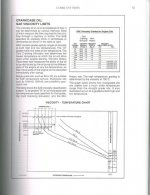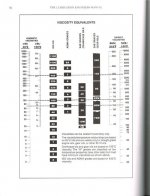BajaRon
Well-known member
The manual calls for 5W-40, and 5W-40 only. If you use anything else, that potentially gives BRP a leg to stand on to deny warranty claims on the engine and transmission. That's what I'm scared of. I will only use 5W-40 with the correct specifications (not necessarily from BRP/Can-Am though) until warranty is up. Which is in six years, so for the foreseeable future
Everyone is free to decide what they want to run, but I am not going to give Can-Am any more ammunition to deny a warranty claim than necessary that's all.
And that is exactly how they want you to feel. It increases sales of their products and helps their bottom line. This is exactly why the Magnuson-Moss Warranty Act was passed. Because manufactures were manipulating the customer with their bait and switch warranties.
It is interesting that when BRP sold a 10/40 weight oil, that is the weight that they recommended for the Spyder.
They have to prove that it was the lubricant that created the damage. They can't just say you didn't use 5/40 so you're toast. There is no way they can do this unless you're cold starting a 10/40 oil in temperatures below 0 degrees. The industry knows exactly what temperature each oil operates at. You can easily find this information. So, what are they going to say? That starting your bike in 60 degree weather with a 10/40 oil did damage? They can't make that stick. If they are going to do that, then using 5/40 oil isn't going to save you. They will just find some other excuse.
The only warranty issues I've seen have been cases where they never intended to honor the warranty anyway. Regardless of how careful the owner was to meet every specification. In those cases, the owner won out if they stuck to their guns.
For example. The DPS on my 2008 GS went out. The dealership said that the failure was caused by the aftermarket cruise control system I installed. It was total huey as the cruise control has nothing whatsoever to do with the power steering. They were just fishing for an excuse not to warranty my DPS. They were hoping I'd just throw up my hands and pay for the repair. (By the way, the dealership makes more money for a customer paid repair than they do for warranty work). I am fully convinced that if I had not installed that CC. They would have found another lame excuse to give me grief.
It's a shame when the paying customer lives in fear of their supplier. But it is very common these days even with a law specifically written to prevent abuse.


